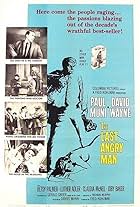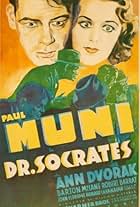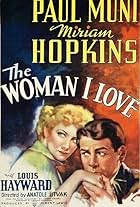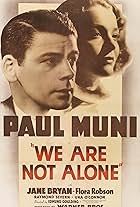Photos
Storyline
Did you know
- TriviaThis film is believed lost.
Featured review
Paul Muni acquired his skill with elaborate make-ups at an early age, when he was playing old men (while still a teenage boy) in the Yiddish theatres of New York City's Second Avenue. The early talkie 'Seven Faces' was conceived as a star vehicle for Muni, giving him a chance to play seven characters with widely diverse appearances and voices.
In "Seven Faces", Paul Muni plays Papa Chibou, an elderly porter in a rundown waxworks hall, who imagines that seven of the waxworks come alive and speak to him. Muni also plays six of the waxworks, including a satanic creature with elongated fingers (Diablero), a Cockney pearlie (Willie Smith) and the Negro prize-fighter Joe Gans. Muni's depiction of a black man is more realistic than we might expect. The seventh waxwork, Catherine the Great, is played by an actress: like Woody Allen in "Zelig", it would seem that Paul Muni can turn into a black man but he can't become a woman. Muni's performance as Chibou is remarkable: at the climax of the film, nearly insane with desperation, he abducts the wax Napoleon and drags it through the streets.
The subplot concerns two young Parisians -- dull Marguerite Churchill and slightly less dull Russell Gleason -- who conduct forbidden trysts by means of love notes concealed in the clothing of the waxworks. Russell Gleason -- son of veteran character actor James Gleason -- was a highly intelligent and handsome young man with a promising career as an actor ahead of him when he was conscripted into World War Two. The night before his regiment were to ship out for Europe, PFC Russell Gleason died in a fall from a Manhattan hotel window. Was it suicide, or was he merely trying to go AWOL? The answer will never be known.
By 1929, talking films were clearly here to stay, yet the most protean actor in Hollywood -- the great Lon Chaney -- was stubbornly continuing to make silents. As Chaney's parents were known to be deaf-mutes, there were rumours that Chaney was likewise a mute: his boycott of talking pictures, and his legendary reclusiveness, seemed to confirm this. When "Seven Faces" was released, a critic observed: "Muni has got as many faces as Lon Chaney, AND HE TALKS!" It was the release of "Seven Faces", and the public's favourable comparison of Muni to the older Chaney, that prompted Chaney to make his first talking picture ... which was also, regrettably, his last film.
In "Seven Faces", Paul Muni plays Papa Chibou, an elderly porter in a rundown waxworks hall, who imagines that seven of the waxworks come alive and speak to him. Muni also plays six of the waxworks, including a satanic creature with elongated fingers (Diablero), a Cockney pearlie (Willie Smith) and the Negro prize-fighter Joe Gans. Muni's depiction of a black man is more realistic than we might expect. The seventh waxwork, Catherine the Great, is played by an actress: like Woody Allen in "Zelig", it would seem that Paul Muni can turn into a black man but he can't become a woman. Muni's performance as Chibou is remarkable: at the climax of the film, nearly insane with desperation, he abducts the wax Napoleon and drags it through the streets.
The subplot concerns two young Parisians -- dull Marguerite Churchill and slightly less dull Russell Gleason -- who conduct forbidden trysts by means of love notes concealed in the clothing of the waxworks. Russell Gleason -- son of veteran character actor James Gleason -- was a highly intelligent and handsome young man with a promising career as an actor ahead of him when he was conscripted into World War Two. The night before his regiment were to ship out for Europe, PFC Russell Gleason died in a fall from a Manhattan hotel window. Was it suicide, or was he merely trying to go AWOL? The answer will never be known.
By 1929, talking films were clearly here to stay, yet the most protean actor in Hollywood -- the great Lon Chaney -- was stubbornly continuing to make silents. As Chaney's parents were known to be deaf-mutes, there were rumours that Chaney was likewise a mute: his boycott of talking pictures, and his legendary reclusiveness, seemed to confirm this. When "Seven Faces" was released, a critic observed: "Muni has got as many faces as Lon Chaney, AND HE TALKS!" It was the release of "Seven Faces", and the public's favourable comparison of Muni to the older Chaney, that prompted Chaney to make his first talking picture ... which was also, regrettably, his last film.
- F Gwynplaine MacIntyre
- Feb 19, 2002
- Permalink
Details
- Release date
- Country of origin
- Language
- Also known as
- Lover Come Back
- Production company
- See more company credits at IMDbPro
- Runtime1 hour 18 minutes
- Color
Contribute to this page
Suggest an edit or add missing content


















